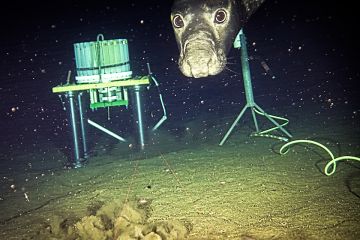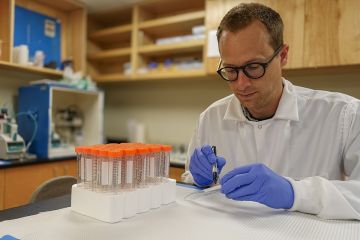From the bottom of the ocean, you can sea the stars
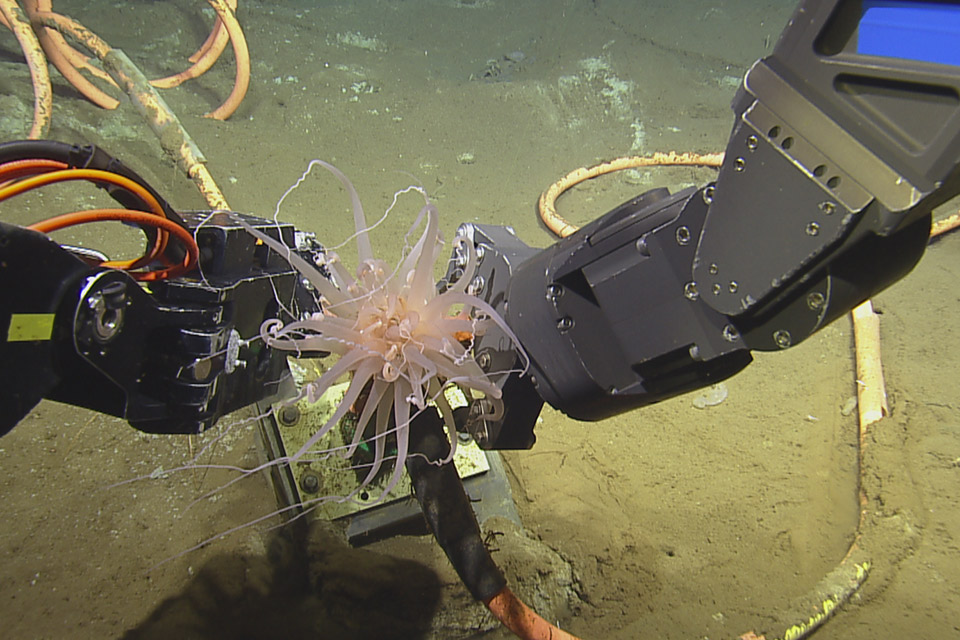
An ONC project brings new meaning to “ocean observatory,” as ghost particles from deep space pass through the deep sea
Could the world’s next large-scale neutrino detector be built at the bottom of the ocean? This summer, as part of its 2018 Wiring the Abyss expedition, Ocean Networks Canada (ONC) is installing specialized equipment at its deepest site in the northeast Pacific Ocean to assess the location’s suitability for observing neutrinos.
Ocean Neutrinos Canada?
Neutrinos are one of the universe’s most essential and difficult-to-study ingredients, sometimes dubbed “ghost particles” because they travel across the universe and through normal matter—including the centre of the Earth and human bodies—at nearly the speed of light without interference.
They’re also one of the universe’s most abundant subatomic particles, produced by nuclear reactions from solar fusion, radioactive decay and exploding stars. That’s why increased knowledge about neutrinos could help answer some of the fundamental questions in astrophysics—such as those posed about the Big Bang and supernovae—and provide insight into the origin, evolution and fate of the universe.
The collection of detailed measurements over two years will assess the deep-sea site, approximately 200 km southeast of Vancouver Island and 2,700 m below sea level, for future use.
“A potential full-scale neutrino observatory at Cascadia Basin would benefit particle physics, astrophysics, ocean science and marine biology by offering reliable long-term detection capabilities,” says Benoit Pirenne, ONC’s executive director of user engagement.
If built, a large-scale subsea neutrino observatory would also be a remarkable overlap of areas of expertise. ONC has helped establish UVic as a global leader in oceans and climate at the same time UVic physicists have been active in some of the world’s biggest neutrino projects, such as the T2K neutrino experiment in Japan.
“No one thought of particle physics as a reason to build [the ONC observatory], but the point was always that it should serve multiple disciplines,” Pirenne told The Globe and Mail in a July article devoted to the new equipment.
That type of scientific overlap is true of the new subsea neutrino detectors as well. The equipment is sensitive to bioluminescence, providing scientists with data to study trends in the emission of light by marine animals—used to camouflage, attract, defend, warn, communicate, mimic and illuminate.
In addition to neutrino detectors installations and observatory maintenance, this year’s expedition included installation of the last set of earthquake early warning sensors along the Cascadia subduction zone. ONC and Natural Resources Canada have been simultaneously installing land-based seismic and GPS sensors on Vancouver Island. Once completed, ONC’s comprehensive earthquake early warning system will be tested and delivered to Emergency Management BC by March 2019. The BC government has invested $5 million to help develop the existing system.
Wiring the Abyss 2018
Accomplished in two phases, with two different ocean vessels, ONC conducted two phases of around-the-clock operations to maintain and expand its subsea instrumentation during the summer of 2018. The first leg, aboard Canadian Coast Guard ship John P. Tully, ran from June 21 to July 3 with a team of 35 scientists, engineers, technicians and data specialists. The second leg, from July 21 to Aug. 3, included 48 scientists, engineers, communicators and crew aboard the exploration vessel Nautilus.
In addition to the neutrino experiment and earthquake early warning sensors, other additions to the observatories included:
- expanded instrumentation at Endeavour, including new sensors and cameras to improve our understanding of this dynamic hydrothermal vent ecosystem, and
- reinstallation of the refurbished vertical profiling system at Barkley Canyon’s upper slope.
“The spectacular Endeavour vents have attracted international research attention since they were discovered in the early 1980’s and have produced many firsts, from the hottest black smokers and the tallest chimneys to the most heat-tolerant animals and microbes—not to mention being the location of the world first hydrothermal vent marine protected area,” says ONC chief scientist Kim Juniper.
Seamounts Expedition
Scheduled between the two legs of ONC’s Wiring the Abyss, a new partnership led by Fisheries and Oceans Canada with the Haida Nation, Oceana Canada, and ONC spent 16 days aboard the Nautilus exploring underwater seamounts near Haida Gwaii and installing subsea equipment to continue to monitor one of the three key underwater mountains studied.
The Northeast Pacific Seamounts Expedition, which ran from July 5 to 21, explored three seamounts—SGaan Kinghlas-Bowie, Dellwood and Explorer—surveying and collecting data on the physical features and ecosystems of the seamounts.
This expedition provided benchmark data for long-term ecosystem monitoring and scientific research to help conserve and manage seamounts, which are critical for ensuring a healthy ocean.
Seamounts are offshore biodiversity hotspots. These highly-structured environments are ideal for coral and sponge growth, in turn providing nursery and foraging habitat important for fish populations and other marine life.
Seamounts can be found in every ocean but are particularly abundant in the Pacific Ocean, with many near the islands’ of Haida Gwaii. Up until the 1980s, seamounts were not widely studied, and scientists have only begun to learn about their ecological importance. Research from this expedition will help us better understand this critical marine habitat and support management of these areas, including the implementation of additional protection measures.
Photos
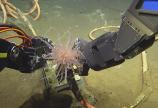
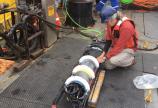
In this story
Keywords: research, physics, earthquake, oceans, ONC, marine, expedition, neutrino, Cascadia, observatory, science, bioluminescence
People: Benoit Pirenne


